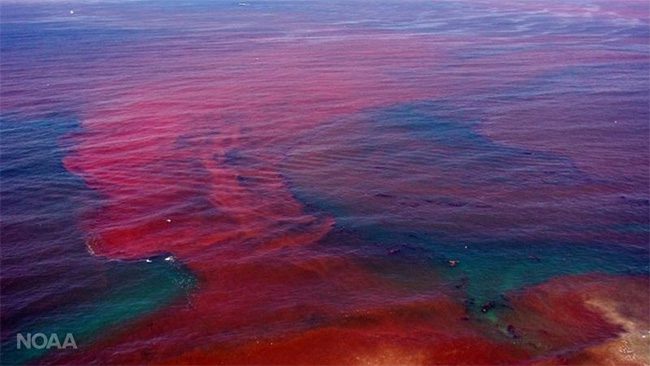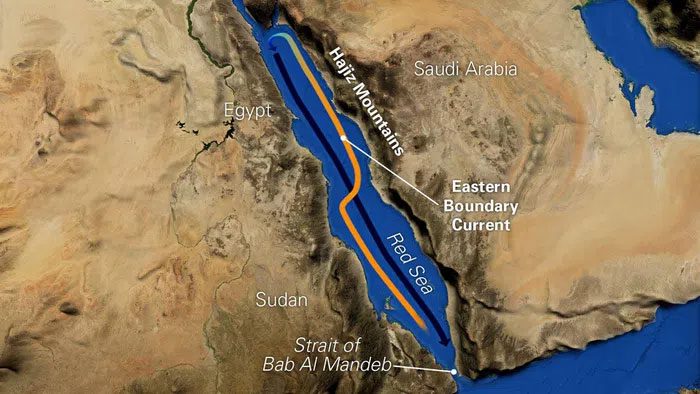Long and narrow, the Red Sea lies between northeastern Africa and Asia. It stretches approximately 1,930 km from the Gulf of Suez in the north to the Gulf of Aden in the south, ultimately connecting to the Indian Ocean. The maximum width of the Red Sea is 305 km, and its maximum depth is 3,040 meters, covering an area of about 450,000 km2.


Location of the Red Sea on the map.
Satellite images taken from space show the Red Sea as a stretch of blue running from north to south along the northeastern edge of Africa.
The deep blue here contrasts with the brownish-gray of the surrounding landscape. The water is not red at all, despite the sea’s name.
So why does this body of water have such a famous nickname?
Karine Kleinhaus, an associate professor of marine and atmospheric sciences at Stony Brook University in New York, USA, states: “I don’t think anyone has a definitive answer; there are several theories related to the name Red Sea.”
According to NASA’s Earth Observatory, the origin of the name Red Sea is linked to a type of cyanobacteria called Trichodesmium erythraeum.
T. erythraeum thrives abundantly, appearing in most tropical and subtropical oceans worldwide, especially in the Red Sea region. Here, the algae bloom periodically, rapidly increasing in population, and when the algae die off, the water takes on a reddish-brown color that spreads across the surface.
However, Karine Kleinhaus shares that the name Red Sea may also refer to the red mountains located near the coastline.
The Red Sea is not only famous for its intriguing name; it is also an interesting site for biodiversity, home to many endemic species that can only be found in these waters.
The Red Sea is home to one of the longest continuous coral reefs in the world, stretching 4,000 km. According to Kleinhaus, the unique characteristics of the coral reefs make the Red Sea one of the few marine areas in the world that is less affected by climate change.
Karine Kleinhaus notes: “The corals that developed there at the end of the last Ice Age are the species that can withstand very high temperatures and salinity. Therefore, the corals here are thriving under rising temperatures, and it is estimated that this is one of the last coral reefs to survive in this century.”


















































